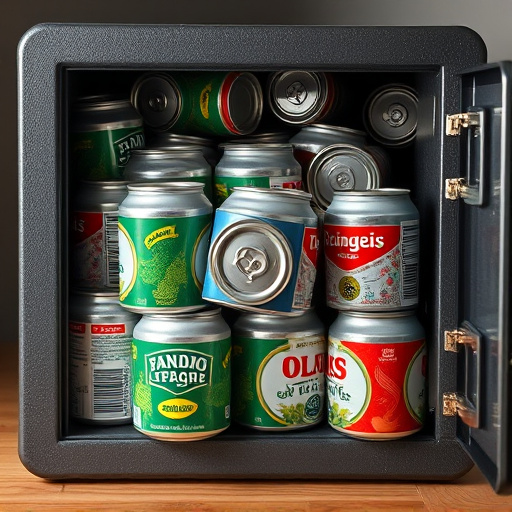In a digital age prioritizing privacy and security, concealed security solutions offer robust protection against theft, counterfeiting, and unauthorized access. A hairbrush tutorial exemplifies this, showing how everyday products can hide valuable items or sensitive info, enhancing security without sacrificing aesthetics or usability. By following five steps (inspection, disassembly, identifying access points, testing, and considering purposes), individuals can create hidden compartments in common household items like a hairbrush for storing travel docs, emergency supplies, cash, and passwords, thus boosting personal security by keeping these materials out of sight.
In today’s world, discretion is key. Concealed security offers a discreet solution for protecting sensitive items within everyday consumer products. This article explores the growing need for hidden compartments, using a simple Hairbrush Tutorial as a guide to reveal their potential. We’ll delve into creative applications, showcasing how fake consumer products can transform into secure storage spaces, enhancing personal safety and privacy.
- Understanding Concealed Security: The Need for Discreet Protection
- Unveiling the Hidden Compartment in Everyday Items: A Step-by-Step Guide
- Creative Applications and Benefits of Securing Your Possessions with Fake Consumer Products
Understanding Concealed Security: The Need for Discreet Protection
In today’s digital age, where privacy and security are paramount, understanding concealed security is more critical than ever. Products designed with discreet protection offer a silent yet powerful layer of safeguard against theft, counterfeiting, and unauthorized access. The need for such solutions has grown, especially among businesses looking to protect their intellectual property and consumers demanding secure transactions. A prime example of this innovative approach is the hidden compartment in a hairbrush tutorial—a simple yet effective method to conceal valuable items or sensitive information within everyday products.
This strategy ensures that personal belongings and trade secrets remain out of sight but easily accessible, revolutionizing how we perceive security. By integrating these concealed features into consumer products, manufacturers can offer enhanced protection without compromising aesthetics or usability. It’s a game-changer for industries dealing with valuable goods, fostering trust among customers seeking secure options in a bustling marketplace.
Unveiling the Hidden Compartment in Everyday Items: A Step-by-Step Guide
Unveiling the hidden compartment in everyday items, like a hairbrush, can be an intriguing process for those interested in creative security solutions. Here’s a step-by-step guide to help you understand this concept and potentially even implement it yourself.
1. Inspection: Begin by thoroughly examining the item. Look for any unusual features or modifications. A hairbrush might have a secret compartment built into its handle, which could be accessed through a subtle flip mechanism or a hidden panel.
2. Disassembly (if safe): If the item allows it, carefully disassemble parts to check for internal compartments. This step requires caution to avoid damaging the item. For instance, some hairbrushes might have removable bristles, behind which a small storage space could be concealed.
3. Identify Access Points: Look for any buttons, slides, or hinges that might open a secret cavity. These access points are often designed to be discreet but can be easily spotted with close inspection.
4. Test and Experiment: Try different methods of opening suspected compartments. This might involve gentle pressing, sliding, or twisting. Be patient as some mechanisms may require a specific sequence or force to operate.
5. Consider Purposes: Once you’ve accessed the hidden compartment, think about potential uses. Could it be used for stowing small personal items, emergency tools, or even secure storage for sensitive documents? This step inspires creativity in designing functional and concealed security solutions.
Creative Applications and Benefits of Securing Your Possessions with Fake Consumer Products
The concept of using fake consumer products as a means of securing hidden compartments is an innovative approach to stealth and discretion. Imagine transforming everyday items like hairbrushes into secret stashes—a Hidden Compartment in Hairbrush Tutorial can teach you how. This creative application isn’t just about hiding small trinkets or emergency essentials; it offers numerous benefits for personal security.
By incorporating these clever tricks, individuals can discreetly store valuable items, travel documents, or even emergency supplies within seemingly ordinary objects. For instance, a fake makeup brush set could conceal cash and passwords, while a faux food storage container might hold identification documents. This method provides an extra layer of protection for sensitive materials, ensuring they remain out of sight and reach from prying eyes.
In conclusion, the integration of concealed security through fake consumer products offers a discreet yet effective method for protecting personal belongings. By understanding the need for such measures and exploring creative applications like the hidden compartment in a hairbrush tutorial, individuals can enhance their safety while navigating today’s world. These innovative solutions not only safeguard valuables but also add a layer of peace of mind, ensuring that possessions remain secure even in seemingly ordinary items.
